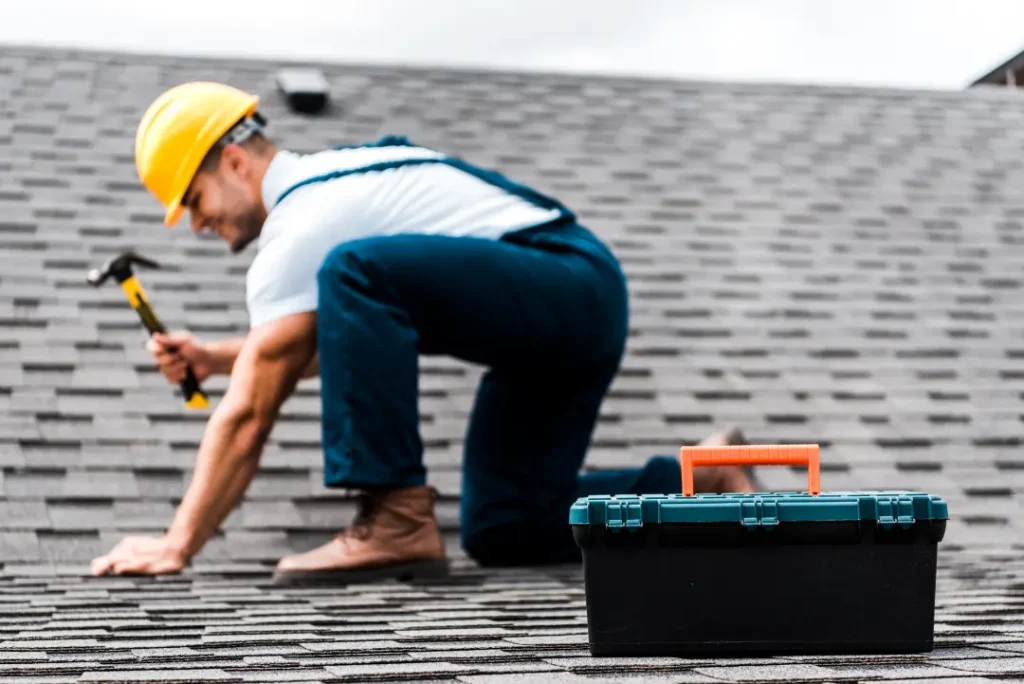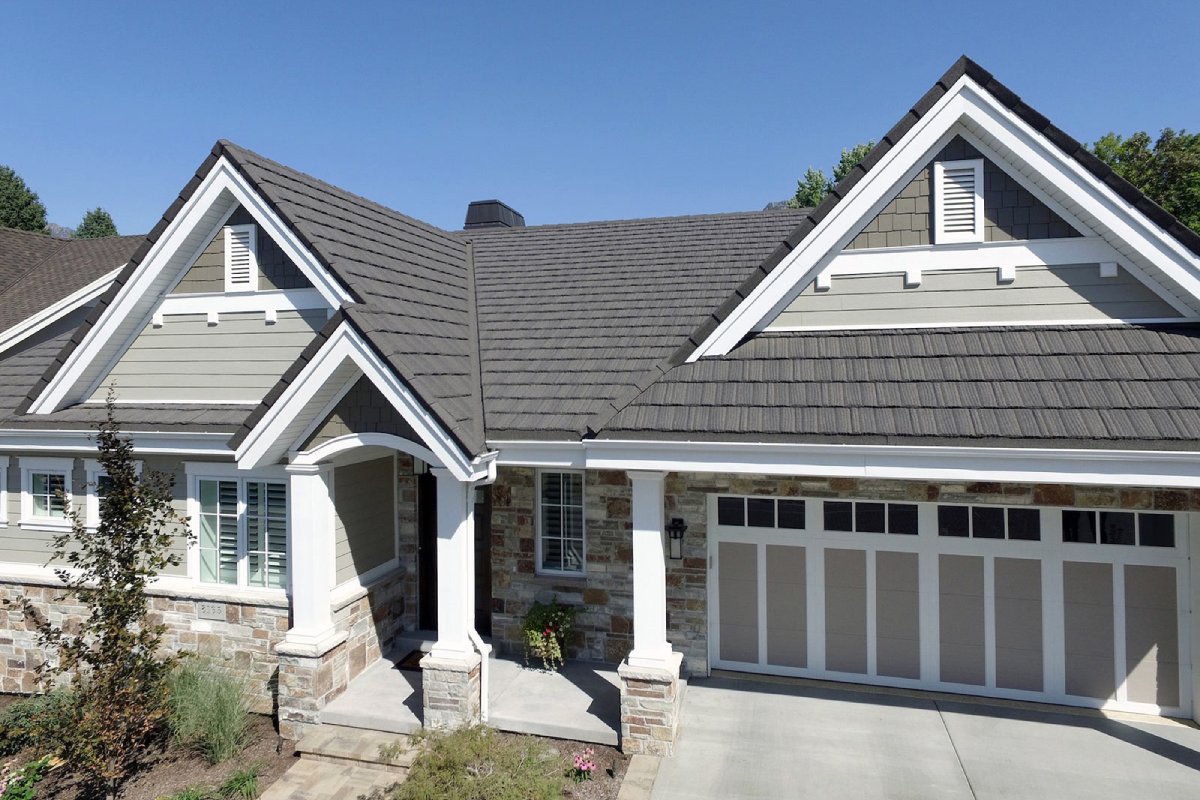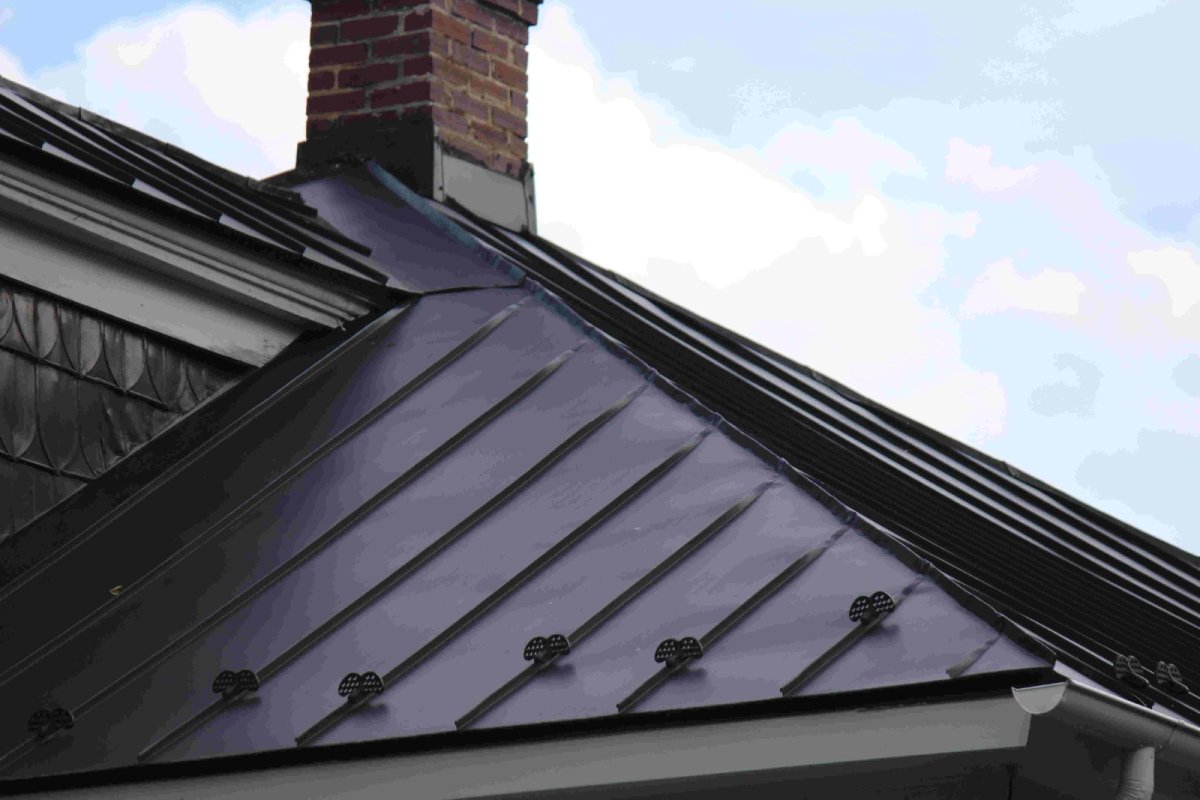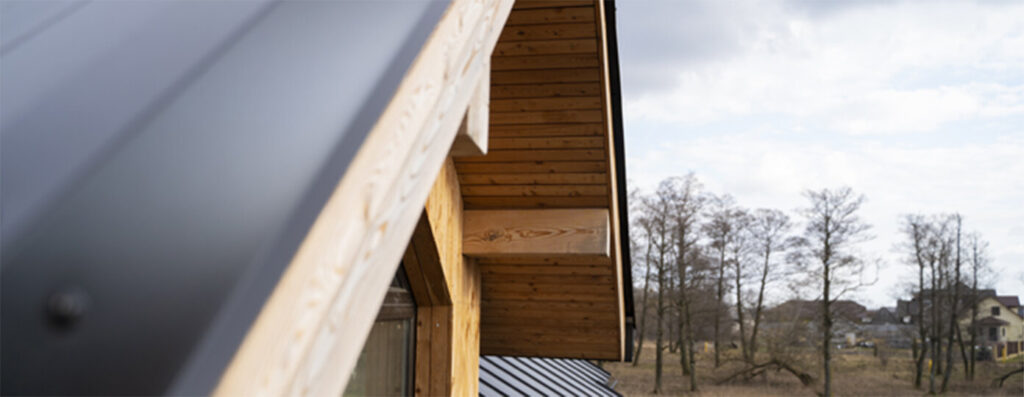When it comes to roofing, the stakes are high, and the options are vast. Cut through the noise with our definitive guide on roofing materials, techniques, and reliable contractor selection, ensuring the safety and longevity of your home or business.
Key Takeaways
- Selecting the right roofing material and contractor is crucial for both functional integrity and aesthetic appeal, with options ranging from asphalt shingles to slate roofs, considering factors like climate, budget, and durability.
- Proper maintenance, including regular inspections and promptly addressing repairs, along with choosing durable materials and sustainable designs, can significantly extend a roof’s lifespan and enhance its energy efficiency.
- Compliance with roofing standards and worker safety regulations is essential for legal and secure roofing projects. Homeowners should also ensure that roofing contractors are appropriately insured to mitigate financial risks.
Introduction to Roofing
More than just a protective covering, the roof of a building is an essential component that contributes to both aesthetic appeal and functionality. A well-installed, maintained roof not only provides shelter from the elements but also contributes to the overall look and style of a structure. Whether it’s a residential roofing project or a commercial one, the roofing material and style selected can significantly impact the building’s appearance and value.
Selecting an appropriate roofing contractor for your roof replacement or repair is of utmost importance. In Greensboro and beyond, homeowners and property owners alike have a plethora of roofing companies to choose from. The best roofing companies provide quality roofing products, from durable asphalt shingles to long-lasting metal roofs, to ensure your roof stands the test of time.
Now, we will navigate the intricate world of roofing and discover how to make optimal choices for your roofing needs.
Roofing Materials: Types and Selections
Selecting the right roofing material is a pivotal decision in any roofing project. The material not only influences the aesthetic appeal of the building but also impacts its durability and energy efficiency. Here are some popular roofing materials to consider:
- Asphalt shingles: Affordable and easy to install, but may not be as durable as other options.
- Metal roofs: Durable and long-lasting, with excellent energy efficiency. However, they can be more expensive upfront.
- Slate roofs: Elegant and highly durable, but also the most expensive option.
Each material has a unique set of properties, advantages, and disadvantages. When making your decision, consider your budget, climate, and desired aesthetic.

Asphalt Shingles
Asphalt shingles are a popular choice for residential roofing due to their cost-effectiveness and versatility. These shingles are available in many colors and styles, making them suitable for a variety of architectural designs. The average lifespan of asphalt shingles ranges from 10 to 35 years, depending on the quality and maintenance. However, upgraded or designer varieties used on commercial buildings can offer greater wind protection and last up to 35 years.
Moreover, you can opt for impact-resistant shingles specifically designed to endure hailstones and reduce roofing damage. It’s worth noting that the longevity of these shingles can be maximized by avoiding cheap materials and refraining from walking on the roof.
Metal Roofing
Another versatile choice that guarantees durability and longevity is metal roofing. Standing seam metal roofs, for example, are designed to last around 50 years. These roofs are appreciated for their sturdiness, capable of withstanding hail up to two inches in diameter, and winds up to 160 mph. They come in a variety of styles, providing both curb appeal and long-term visual appeal.
Although susceptible to dents under large hail, metal roofs usually resist minor impacts well. Although they may come with a higher initial cost, they are known for their cost efficiency due to impressive durability and lesser maintenance needs.
Slate and Ceramic Tiles
Those drawn to natural beauty and exceptional durability may find slate and ceramic tiles to be excellent options. Slate roofing tiles offer a wide range of colors and sizes, catering to diverse aesthetic preferences and architectural styles. Moreover, slate roofs can last for over a century, while concrete tiles can last around 50 years, and clay roofs can last up to 100 years. However, due to their weight, a structural evaluation is necessary before installation.
Special care must also be taken during maintenance, as these tiles can be easily damaged when walked upon.
Roofing Styles: Making a Statement
Beyond the material choice, the style of the roof is equally significant in determining the overall aesthetics and practicality of a building. Popular roofing styles include:
- Mansard roofs
- Gable roofs
- Hip roofs
- Gambrel roofs
- Flat roofs
These styles not only create a visual statement but also serve functional needs.
For instance, mansard roofs add extra living or attic space, while gable roofs provide easy shedding abilities for rain and snow. Choosing a style that matches the architectural design of the building and meets the practical requirements is key to a successful roofing project.
Sustainability in Roofing: Eco-Friendly Options
As sustainability gains prominence, eco-friendly roofing options are becoming increasingly popular. Materials like slate and clay tiles not only contribute to the aesthetic appeal of a building but also improve energy efficiency. Innovative synthetic materials like F-Wave roofing are recyclable and offer eco-friendly options.
Cool roofs, which reflect sunlight and lower heat penetration, reduce the need for air conditioning and energy consumption. Similarly, metal roofing with high solar reflectance can lead to significant savings on air conditioning costs. With the right choice of material and design, a roof can contribute significantly to the environmental sustainability of a building.
Roofing Applications: Commercial vs Residential
Despite similarities in the basic principles of roofing, commercial and residential roofing applications bear notable differences. Some of the key differences include:
- Commercial roofs are often larger and may have specific requirements due to the size and use of the building.
- Commercial roofs may require more durable materials and equipment to withstand heavy foot traffic.
- Commercial roofs may require specialized installation techniques to ensure proper drainage and structural integrity.
It is important to consider these differences when planning and executing residential roofing services for commercial and residential buildings.
Residential roofs, on the other hand, often focus more on aesthetics and may involve a wider range of materials and styles. Understanding the specific requirements of your project, whether commercial or residential, is essential for a successful roofing project.
Roof Maintenance and Inspection
Proper maintenance and regular inspection by professionals are key factors in extending your roof’s lifespan. An optimal inspection frequency is recommended before the colder months when roofs are susceptible to damage due to harsh weather conditions. These inspections should examine the entire roofing system, including soffits, fascia, and attic.

Following a roof removal, the underlying structure must be thoroughly checked and repaired to ensure the integrity of the new installation. Homeowners can conduct visual inspections from the ground and should particularly check shingles for damage and the caulk around flashings seasonally.
Ventilation and Energy Efficiency
Ensuring proper roof ventilation is vital for:
- Maintaining overall roof health.
- Enhancing energy efficiency.
- Promoting indoor comfort.
- Improving air quality.
- Extending roof lifespan.
- Reducing energy bills by promoting optimal thermal comfort and decreasing the workload on HVAC systems.
Roof ventilation should be regularly evaluated for proper placement and airflow.
Potential enhancements include additional vent holes, and ensuring seals around pipes and stacks to prevent condensation issues. A variety of roof ventilation options exist, including ridge, soffit, and gable vents, with solar-powered fans being a sustainable choice that harnesses solar energy to power the ventilation system.
Choosing a Roofing Contractor
Choosing the right roofing contractors is a pivotal element in any roofing project. Here are some key factors to consider:
- Look for a roofing contractor with proven experience, as evidenced by the longevity of their business and the stability of company ownership.
- The contractor should be qualified for the specific project, such as having experience with metal roof installation.
- The installation crew should be well-trained.
Assess the contractor’s professionalism by their appearance, including vehicles, clothing, and manners, as well as the quality of their written estimates and presentation materials. Confirm that the contractor carries essential general liability and workers’ compensation insurance and check publicly available licenses to confirm their credibility.
DIY Roofing Projects: Tips and Safety Precautions
For hands-on enthusiasts, embarking on a DIY roofing project can be a gratifying experience. However, it’s essential to take necessary safety precautions. Assess your comfort with heights and physical fitness before starting. Wear steel-toed boots and shoes with soft rubber soles for protection and better traction on the roof.
Ensure ladder safety by following these tips:
- Use a sturdy ladder with good safety catches.
- Set the ladder on stable ground.
- Have someone nearby to assist with emergency situations or to provide tools and materials.
Remember, safety should always be your top priority when working on a roof.
Essential Roofing Tools and Equipment
Be it a professional roofer or a DIY enthusiast, possessing the right tools and equipment is essential for any roofing task. Here are some basic hand tools that are essential for most roofing projects:
- Hammers
- Roofing nails
- Utility knife
- Chalk line
In addition to these, advanced tools like a pneumatic roofing nailer and roof ladders can make the job easier and more efficient.
Remember, using the right tools ensures the quality of the work and enhances safety during the project.
Digital and Software Tools for Roofing Projects
In this digital era, a plethora of tools and software exist to simplify the planning, execution, and management of roofing projects. From design software that allows you to visualize the final result to project management tools that help you track progress and manage resources, digital tools can add significant value to your roofing projects.
These tools can also facilitate communication, document sharing, and collaboration among team members, ensuring efficiency and accuracy in project execution.
Enhancing Roof Lifespan
With proper installation, regular maintenance, and the right choice of materials, you can significantly extend a roof’s lifespan. For instance, metal roofs can last from 40 to over 100 years, depending on the type, while slate roofing can last over a century. Quality installation is crucial, and proper accessories, such as at least 1 1/4” nails for architectural shingles, superior pipe boots, and correct chimney flashing, must be used to avoid future complications.
Regular maintenance practices, such as immediately repairing opened seams on metal roofs, replacing split and cracked shingles on wood roofs, and promptly removing debris and moss, can also help maximize the lifespan of roofing materials.
Reducing Energy Consumption through Roofing
Opting for and implementing suitable roofing materials and styles can make a significant difference in reducing energy consumption. For instance, slate and clay tiles not only contribute to the aesthetic appeal of a building but also improve energy efficiency. Cool roofs, which reflect sunlight and lower heat penetration, reduce the need for air conditioning and energy consumption.
Similarly, metal roofing with high solar reflectance can lead to significant savings on air conditioning costs.
Roofing Color Choices: Impact on Aesthetics and Heat
The color of the roof can significantly impact both the visual appeal of your home and its thermal efficiency. Light-colored roofs tend to reflect more sunlight and heat, keeping the building cooler in summer. On the other hand, dark-colored roofs tend to absorb heat and can help keep a building warm in colder climates.
Therefore, when selecting a roofing color, consider both the aesthetic impact and the potential energy savings.
Advanced Roofing Techniques for Durability
Contemporary roofing techniques aimed at boosting durability, efficiency, and longevity can yield considerable benefits. From the use of advanced materials to innovative installation techniques, these roofing solutions can result in a longer-lasting, more efficient, and more durable roof. For example, the use of high-quality underlayment can improve the roof’s water resistance, while the use of advanced fastening systems can enhance the roof’s resistance to wind uplift.
By staying informed about the latest advancements in roofing techniques, you can ensure that your roof will last.
Roofing Compliance and Standards
Comprehending and sticking to roofing standards, building codes, and compliance requirements is vital for ensuring safe and legal roofing projects. These regulations ensure that roofs are constructed to withstand various environmental conditions, meet fire safety standards, and provide adequate protection for the building occupants. They also set guidelines for the use of certain materials and installation techniques.
Compliance with these standards not only ensures the safety and longevity of your roof but also helps avoid potential legal issues or penalties.
Worker Safety on Roofing Projects
Safety is of prime importance during any roofing project. Some of the risks associated with roofing work include falling from heights, being struck by falling objects, and encountering electrical hazards. Therefore, it’s essential to follow safety guidelines and best practices to ensure worker safety. These include using personal protective equipment like safety harnesses, gloves, and helmets, setting up guardrails and safety nets, and conducting regular safety training.
Remember, a safe workplace is not only a legal requirement, but also a critical factor in the successful completion of any roofing project.
Understanding Roofing Insurance and Liability
Roofing insurance plays an integral role in guarding both homeowners and contractors against possible financial risks roofing projects might entail. These could include damages to the property, injuries to workers, or unexpected issues during installation. A comprehensive roofing insurance policy should cover aspects of liability, workers’ compensation, and property damage.
In addition, contractors should offer warranties on their work, which would give homeowners peace of mind knowing their investment is protected.
Weather Resistance and Roofing
Considering a roof’s resistance to different weather conditions is critical in its design and material selection. Factors such as wind, rain, snow, hail, and sun exposure can significantly impact a roof’s longevity and performance. For instance, most metal roofs have a Class A fire rating, providing high resistance against the spread of flames and making them suitable for areas with a high wildfire risk. In coastal areas where corrosion is a concern, alloyed materials like Galvalume steel offer excellent rust resistance.

Furthermore, proper attic and ceiling insulation is essential for preventing ice dams that can cause leaks, particularly at the juncture of roofing planes.
Roof Inspection and Repair: Ensuring Roof Integrity
Carrying out proper roof inspections and timely repairs is crucial in upholding the integrity and functionality of your roof. A thorough inspection involves examining the roof for signs of damage or deterioration, such as missing or broken shingles, damaged flashings, or leaks. Any identified issues should be addressed promptly to prevent further damage.
This not only ensures the long-term performance of the roof but also helps avoid costly roof repairs or replacements in the future.
Xterior: Your Trusted Roofing Partner
If you reside in North Carolina and are in search of a reliable roofing partner, Xterior is the right choice for you. With a focus on quality and convenience, Xterior offers high-quality roofing services backed by impressive credentials. They are Google Guaranteed, a preferred contractor for Owens Corning, and have held an A+ rating with the BBB for over five years.
Clients have highly rated Xterior, noting their professionalism, efficiency, and thoroughness from inspection to project completion. Choosing Xterior means trusting a team committed to delivering exceptional customer service and quality workmanship in every project.
Summary
In conclusion, roofing is a complex and multi-faceted field that touches upon various aspects such as materials, styles, sustainability, maintenance, safety, and cost, among others. Whether you’re a homeowner, a commercial property owner, or a roofing contractor, understanding these aspects can help you make informed decisions about your roofing projects.
Remember, a well-installed and maintained roof not only enhances the aesthetic appeal of a building but also contributes to its energy efficiency and longevity. With the right knowledge and guidance, you can ensure that your roof stands the test of time.
Frequently Asked Questions
What is the difference between a roofer and a carpenter?
The main difference between a roofer and a carpenter is that roofers focus specifically on roof-related carpentry, often working in outdoor conditions and wearing safety equipment. In contrast, carpenters may work on framing and roofing simultaneously. This distinction is important for understanding the specific skills and working conditions of each profession.
Is roofing physically hard?
Yes, roofing is physically hard as it involves heavy lifting, climbing, bending, and kneeling, along with working at heights and with tools. It requires individuals to be in good physical condition and able to withstand outdoor conditions.
What is the proper name for a roofer?
The proper name for a roofer is a roofing contractor or roof mechanic. They are tradespeople who specialize in roof construction and work with various materials such as shingles, bitumen, and metal.
What are some popular roofing materials?
Some popular roofing materials are asphalt shingles, metal roofing, and slate and ceramic tiles, each with its own set of properties and advantages. Consider your specific needs and preferences when choosing the right material for your roof.
Disclaimer:
The content in this blog is for informational purposes only and is intended to assist homeowners in understanding roofing, siding, windows, gutters, shutters, and general home improvements. Xterior LLC advises against attempting any of the tasks described here, as they require professional expertise. We do not assume liability for any injuries, damages, or losses resulting from DIY attempts. Always refer to the manufacturer of products for specific maintenance instructions.
By viewing this blog, you acknowledge and release Xterior LLC from any and all liability related to the use or misuse of the information provided.
Please note that Xterior LLC may not offer all the services discussed. Repairs, estimates, and inspections are priced based on availability, location, and time. All services, offerings, and prices are subject to change without notice.
For more information or to request services, please contact Xterior LLC directly.





